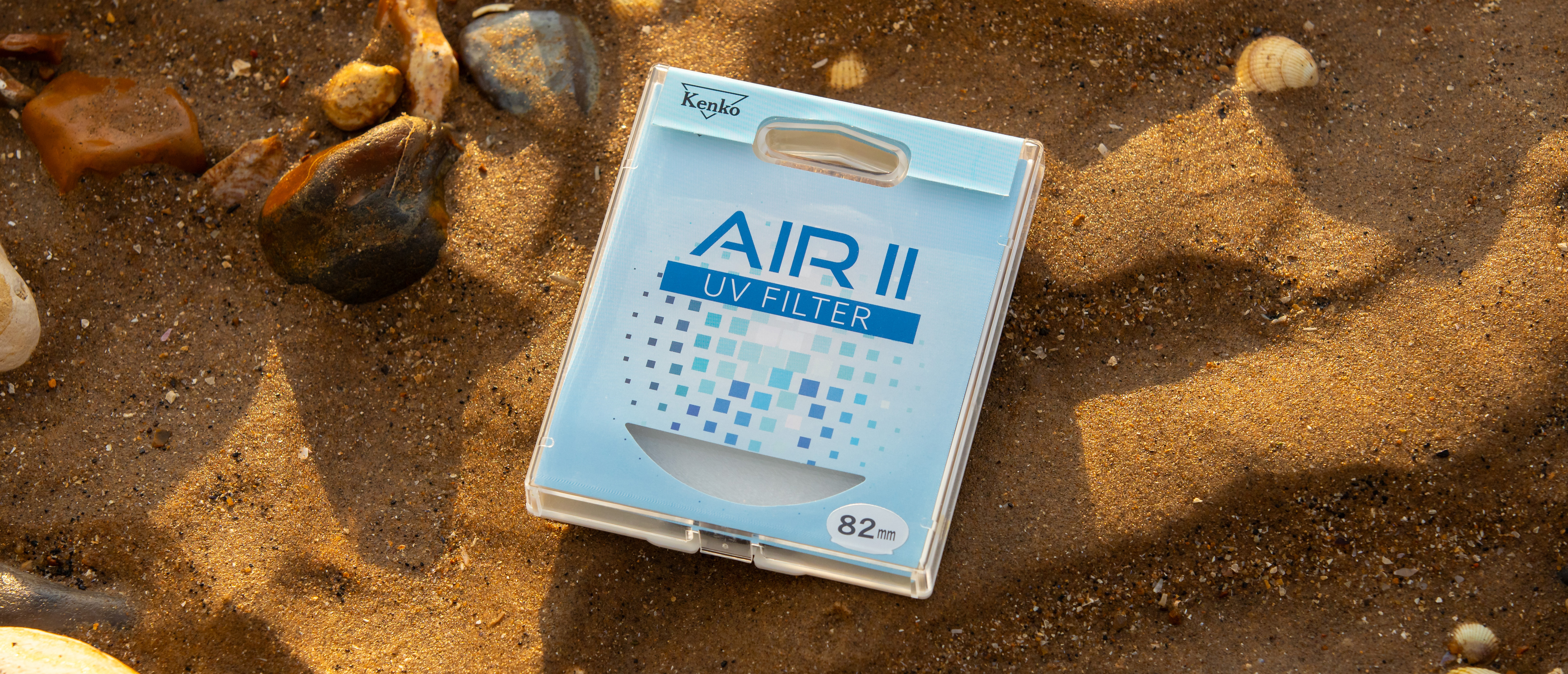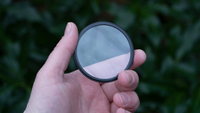Digital Camera World Verdict
Pros
- +
Great for protecting your lens' front element from dust, dirt, water, fingerprints and damage
- +
Doesn't break the bank
- +
Has haze reducing and scene sharpening properties (though they are very minimal)
Cons
- -
No water repellent or anti-reflective coating
Why you can trust Digital Camera World
A UV filter can be a savvy investment for the vast majority of photographers. As most modern digital cameras come with a UV cut filter on the camera sensor itself, a UV filter which screws into the front filter thread of your lens, like Kenko's Air II UV filter, will have a minimal effect on your images.
So you may think it pointless attaching a filter to your lens which has a minimal effect on your shots... However, having the filter attached to your lens can be a brilliant protective measure to prevent dust, dirt, water or even greasy fingerprints getting on to the front element of your lens. It's also much more cost effective to replace a UV filter which has become scratched or broken than the front element of your expensive lenses.
The UV filter on trial here in this review belongs to Kenko's AIR II range: an entry-level and easy-to-use range of filters that can absorb and cut UV rays while delivering a permanent protective layer to your lens.
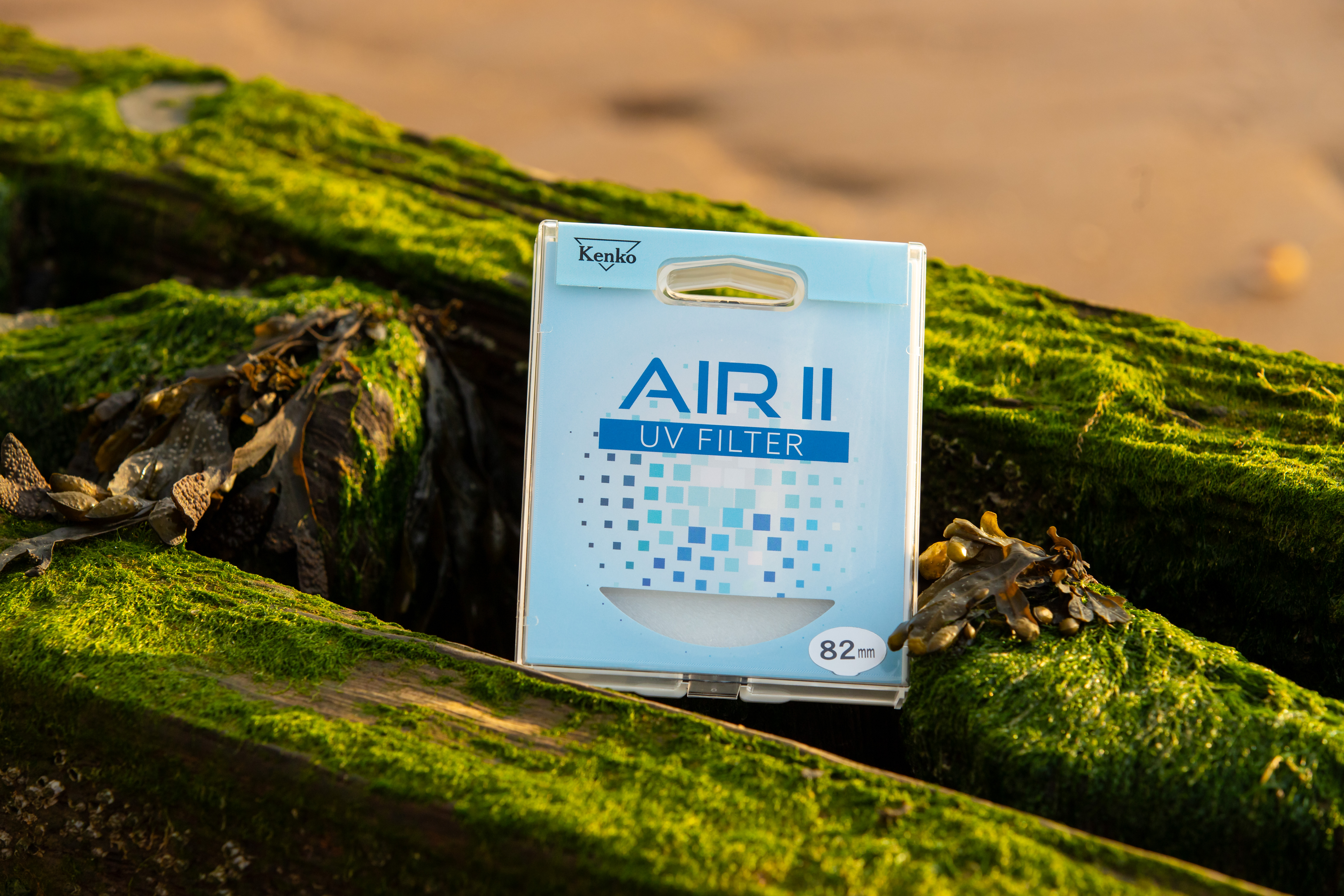
Specifications
| Filter type | UV cut |
| Mount | Screw-in |
| Thread diameter range (mm) | 49, 52, 55, 58, 62, 67, 72, 77, 82 |
| Filter material | Standard (blue) glass |
| Frame material | Aluminum |
| Thickness | 6 mm |
Build & Handling
Many of Kenko's more premium filters are made in Japan, though the Kenko AIR II UV is manufactured in the Philippines. This is perhaps no surprise given the filters have an enticingly low RRP which is great for tight budgets.
It boasts a high-quality aluminum frame that has a depth of 6mm, though only protrudes by 4mm when it's screwed into your filter's front thread. It also comes in a range of sizes to fit a wide variety of lenses with different filter threads from the smallest 49mm to the largest 82mm. Prices fluctuate depending on size between $12 - $15 / £6 - £14, so the filters are incredibly cheap and one of the most affordable photographic accessories.
The Kenko AIR II UV boasts standard (blue) glass. Sadly, it doesn't feature any coatings such as Kenko's AR (Anti-reflection coating) or any sort of water-repellent coating as seen on Kenko's more premium filters like the Black Mist No.1. This is a bit of a shame as it would have made the filter much better to use in inclement weather with any water drops and splashes beading off the glass rather than gathering in pools and 'sticking' to the filter glass (see below).
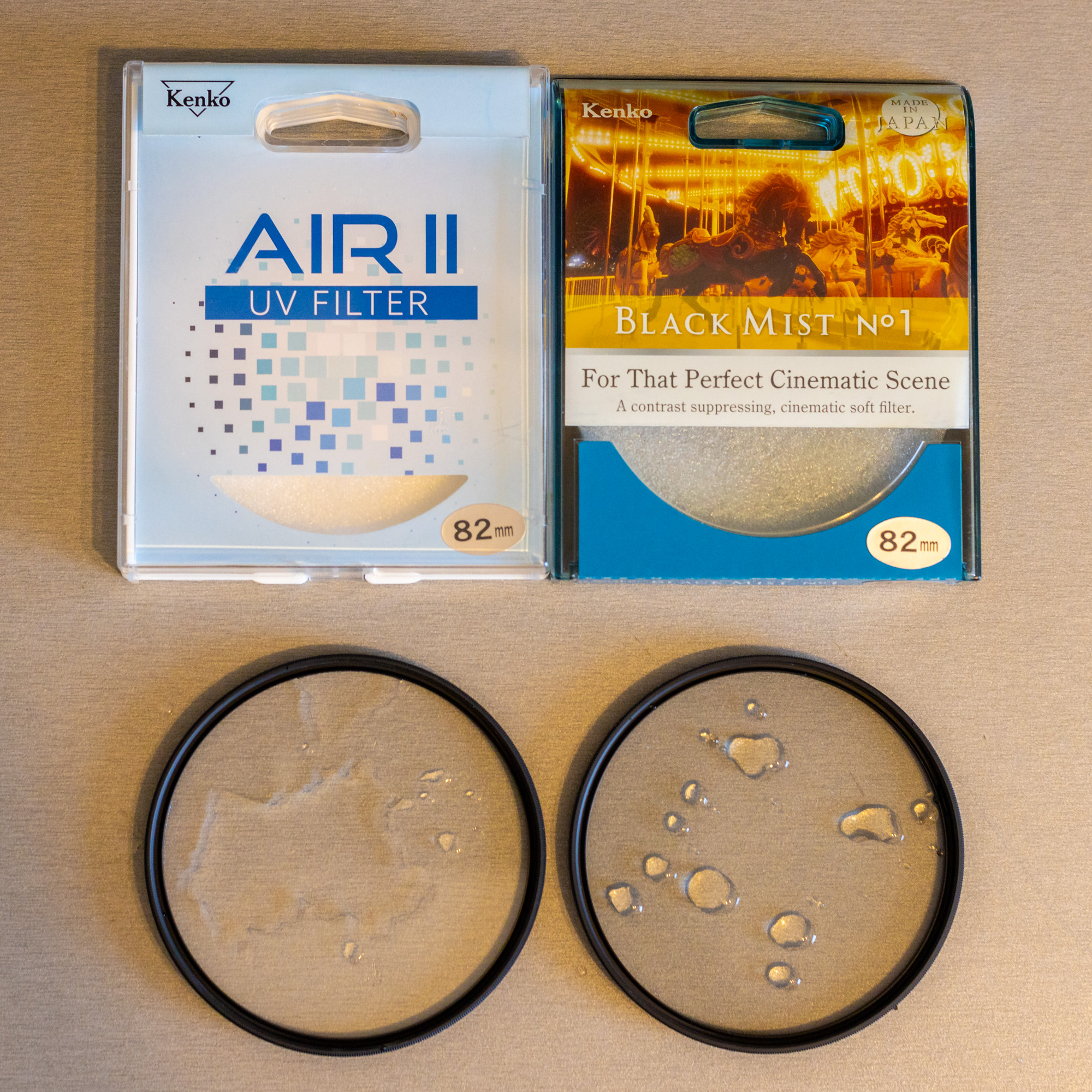
It's worth noting that screw-in filters such as the Kenko AIR II UV will only work with lenses that have a relatively 'flat' front element and feature a front filter thread. That means there is a small selection of lenses with a bulbous front element such as the Canon EF 11-24mm f/4L USM or Sigma 20mm f/1.4 DG HSM | Art lenses where front filters cannot be attached, so you can't protect them in this way.
Performance
Kenko claims the AIR II UV can cut out UV light to reduce haze and sharpen your final images. However, its UV-cutting ability is likely to vary a little depending on the camera you're using it on, as there is more often than not a UV cut on the filters of most modern digital cameras. On our Canon EOS R paired with a Canon EF 16-35mm f/2.8L USM II lens the effect was negligible though perhaps reduced haze and sharpened details by a fraction (see below).
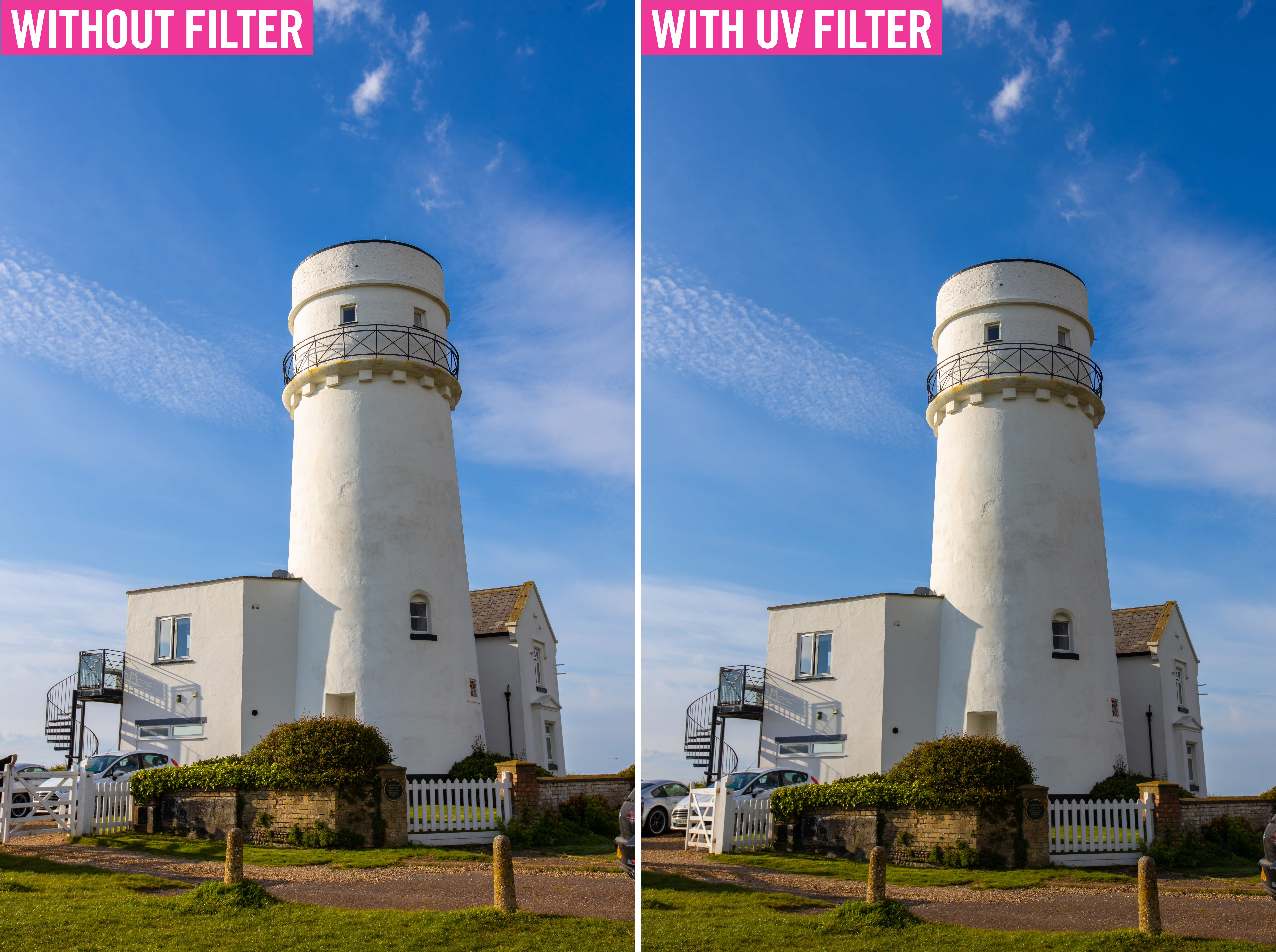
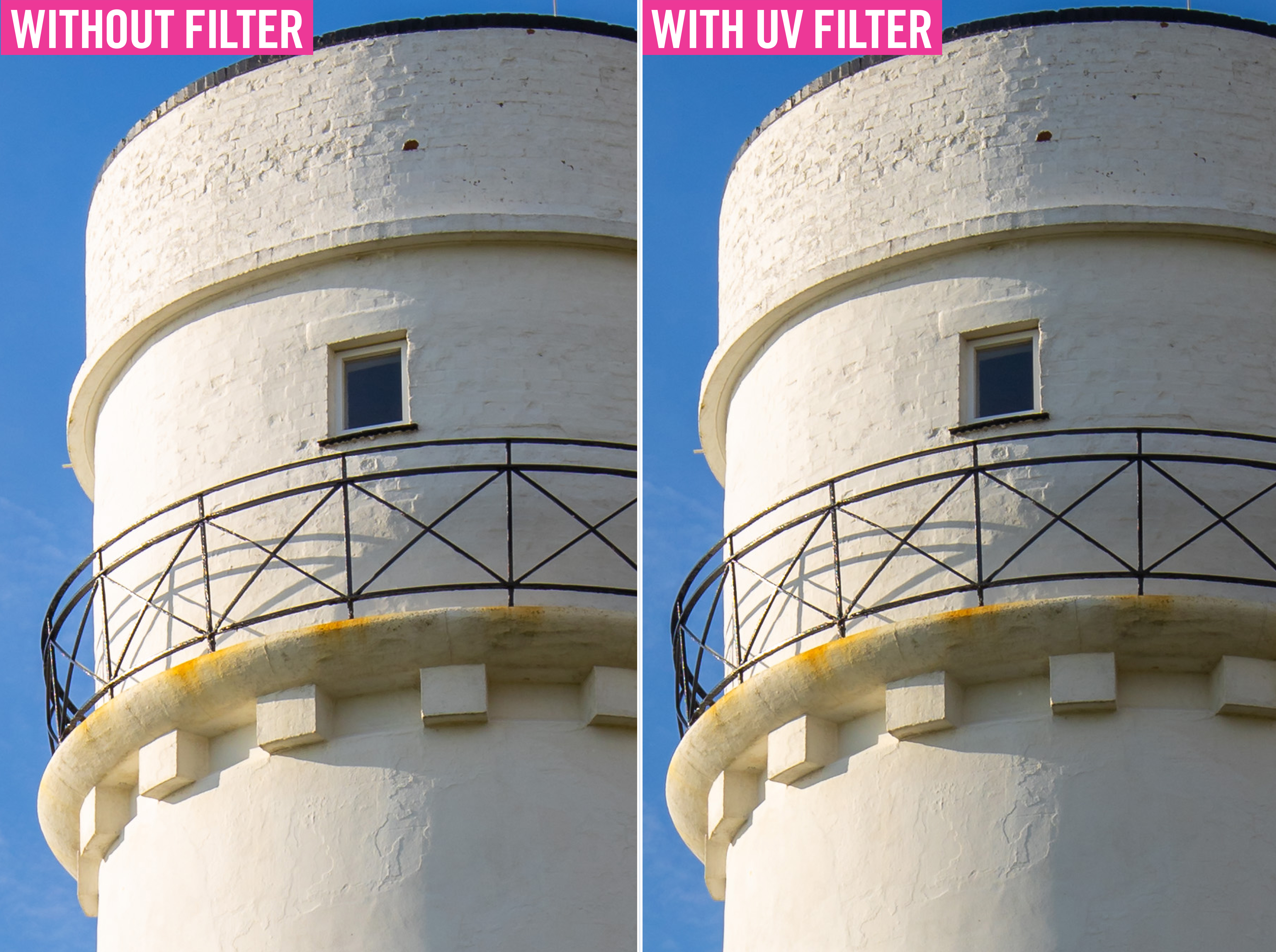
While not being one of Kenko's slimline filters, the AIR II UV has a depth of 6mm (4mm when attached), we didn't find any signs of vignetting even when shooting at the widest focal length of 16mm on our Canon EF 16-35mm f/2.8L USM. However, we could see vignetting become more of an issue if you wanted to stack filters together, especially at wider focal lengths.
There's an argument to suggest against putting a cheap filter costing just a few bucks on an expensive lens that could cost thousands of dollars. When taking a key shot in the past we'd have been tempted to remove our UV filters temporarily to take a shot with the ultimate image quality, however looking at the image quality results here we don't think there's much in it – if anything images with the filter attached seem to be improved by a very minor margin.
Verdict
The Kenko AIR II is a UV filter with very few bells and whistles. While we would have loved it to feature anti-reflective and water-repellent coatings, we can't really argue with its enticingly low price point.
You get a lot of bang for your buck, considering we found its image quality to be very good and protects your expensive lenses for very little outlay. If having anti-reflective and water-repellent coatings is important to you then it might be worth spending the extra on a more premium UV filter, however, if you're not bothered by its lack of coatings, or you're just on a super strict budget then Kenko's AIR II UV is a great one to go for.
Alternatives
Are you a beginner in photography or searching for a budget-friendly solution? Tiffen's UV Protector filter is an excellent alternative to the Digital HT Ultra Clear filter. It effectively reduces the impact of UV light and provides reliable protection for your lens - but without any multi-coated surfaces or a hefty price tag.

Deputy Editor on PhotoPlus: The Canon Magazine, Dan also brings his technical wizardry and editing skills to Digital Camera World. He has been writing about all aspects of photography for over 10 years, having previously served as technical writer and technical editor for Practical Photography magazine, as well as Photoshop editor on Digital Photo.
Dan is an Adobe-certified Photoshop guru, making him officially a beast at post-processing – so he’s the perfect person to share tips and tricks both in-camera and in post. Able to shoot all genres, Dan provides news, techniques and tutorials on everything from portraits and landscapes to macro and wildlife, helping photographers get the most out of their cameras, lenses, filters, lighting, tripods, and, of course, editing software.
